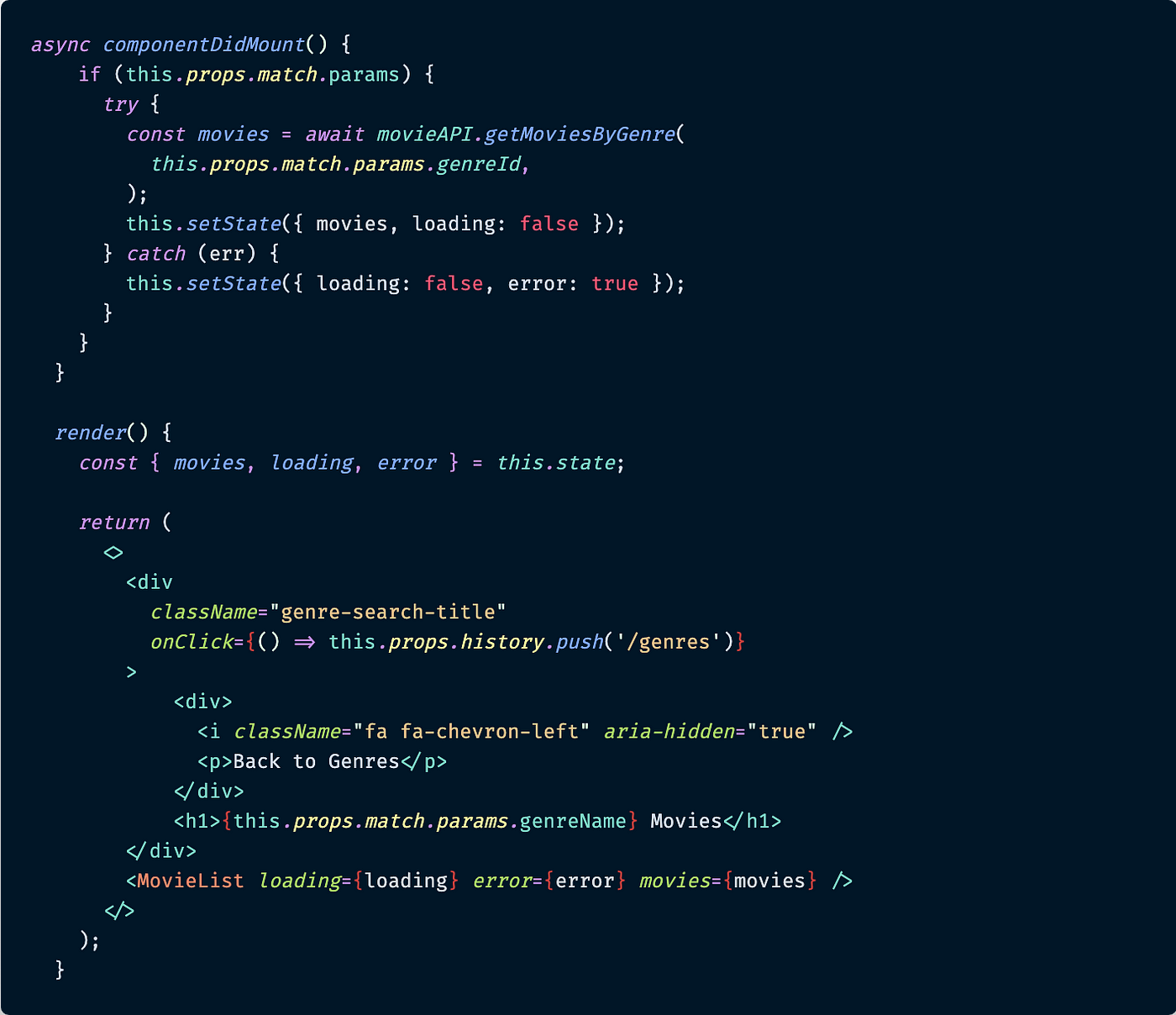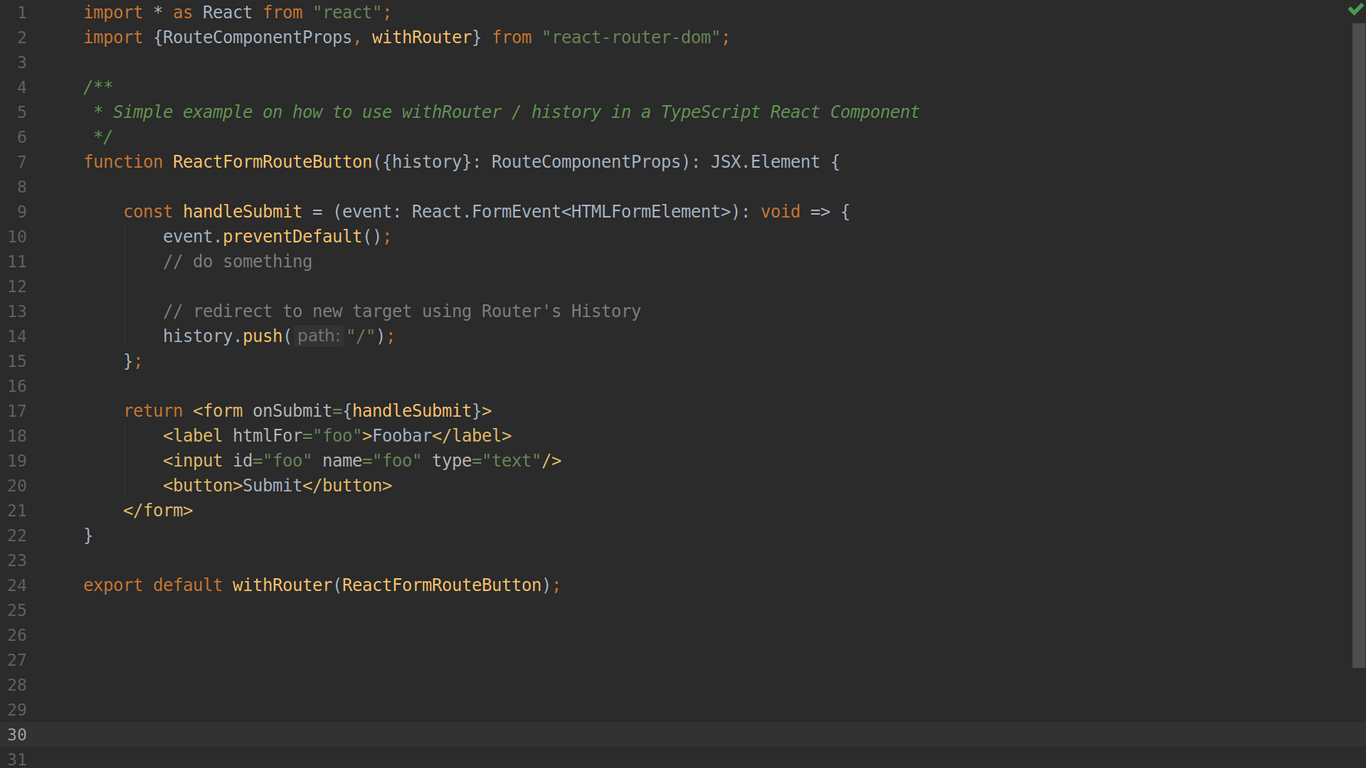
The hash tag in the URL is a barrier to a true hypermedia service that can exist in a browser just as it would in a under-the-hood http client using the API.
#React router dom history push with state pdf
In return for your e-mail address, you’ll also immediately receive 3 print-optimised PDF cheatsheets – on React, ES6 and JavaScript promises.

Update: Building a Router with Raw React has been released. Get on my newsletter now to make sure you don’t miss it. But what if you’re not confident enough to implement a hash-based router for your app? As it happens, you’re in luck! I’ll soon be releasing my guide to hash-based routing with Raw React. So next time you’re designing a new app, don’t shoot yourself in the foot design your routing based on requirements, not trends. However, using it where it isn’t needed is effectively gold-plating your app – wasting precious resources on unneeded features when what you really want is to just get the job done. No don’t get me wrong – push-state routing does have its place.
#React router dom history push with state code
But you’re kidding yourself if you think that 31.37kb of minified code – which uses undocumented React features like contexts – is less complex than the above snippet. Window.addEventListener('hashchange', handleNewHash, false) īut James, you say – this looks much more complex than routing with react-router! Well, sure – it takes a few more lines. Handle the initial route and browser navigation events ReactDOM.render(application, document.getElementById('react-app')) Split location into `/` separated parts, then render `Application` with it In contrast, a roll-your-own hash-based router can be implemented in 23 lines of React: // Renders the application for the given route Maybe you’re an exception to these rules – but if you’re not, push-state routing adds enormous complexity for little to no benefit. Secondly, unless you’re Facebook, you probably shouldn’t be optimising for a few milliseconds speedup.Īnd thirdly, unless you write your entire backend with server-side rendering in mind, you won’t get that performance improvement anyway. And before you ask – no, removing #/ from your page URLs is not a benefit. This means that the only benefit you can possibly receive from push-state is the performance improvement. In most cases, designing your new app with push-state routing is a mistake.įirstly, Most apps are hidden behind a login screen, and thus have at most one page which needs to be indexed by Google.


In contrast, hash-based routing works by only considering the part of the URL starting with the # character, which I’ll refer to as the hash.


 0 kommentar(er)
0 kommentar(er)
